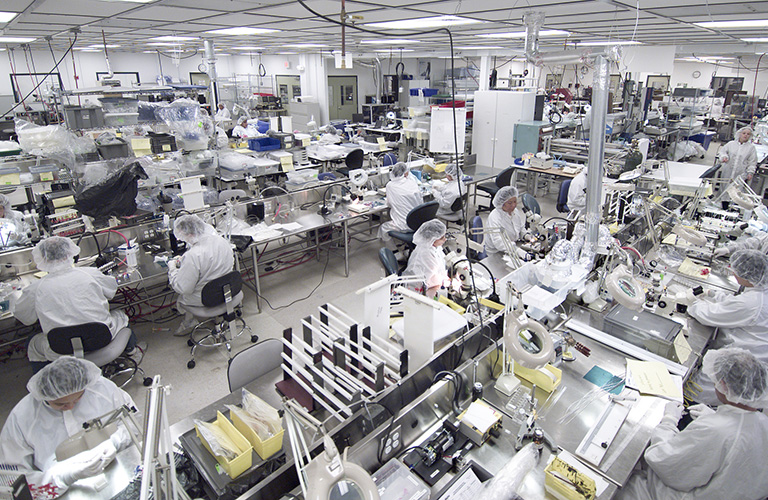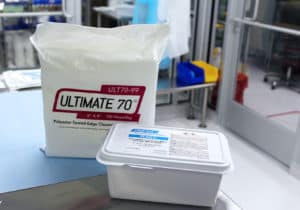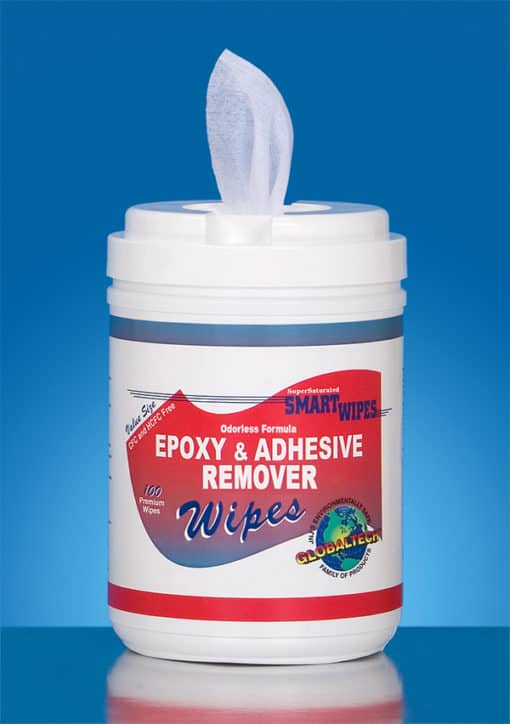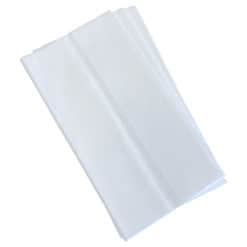Cleanroom News, General Topics
Storing and Handling Cleanroom Wipers: Your Complete Guide
Cleanrooms are imperative to a variety of industries where even a fraction of a microparticle can tilt the balance from precision to potential disaster. Central to the sanctity of these environments are cleanroom wipes—small, often underestimated components in the vast toolset of facilities.
A rarely discussed aspect of contamination control when it comes to cleanroom wipe use is handling and storage recommendations. Let’s dive into the basics.
Packaging and Storage: Harmony in Environmental Control
The first step to proper handling and storage of cleanroom wipers is to understand the different types of packaging. These specialty wipes come in various packages to meet the varying demands of each unique critical environment. So, it would make sense that the correct storage system starts with the packaging itself. We’ll look at various packaging options and the benefits of each.
Bag Packing
Typically, ultra-clean wipes for critical environments (ISO 4-6) are packaged in double-bagged poly-lined pouches. They maintain high levels of purity and safeguard against contamination when the outer bag is sanitized before it is brought into the cleanroom. Once open, the wipes should remain in the inner bag until they are used.
Canister and Tub Packing
Canisters offer easy access and can be brought into a cleanroom; wipes in canisters are often pre-wetted with solvents that are compatible with critical cleanroom environments. The advantage to using this type of packaging is the wipes inside are protected from the outside environment and lifespan is prolonged, specifically for presaturated wipes.
Box Packing
For non-critical applications, cleanroom wipes may come in a box that may or may not be suitable for direct transfer into the cleanroom, depending on the specific standards of the environment where they will be used.
Storage Solutions
Proper storage keeps cleanroom wipes free from contaminants, including dust, bacteria, and moisture. The goal is to mimic the cleanroom environment to stave off any potential for contamination during storage.
Cleanroom Wipe Dispensers
The evolution of cleanroom wipe dispensers is a testament to the essential nature of efficient handling. It’s not only about access, but also about ensuring every wipe remains ready for the moment’s notice without risking contamination from human touch.
Cleanroom wipe dispensers such as Grab-EEZ have features designed to prevent accidental contamination such as being overfilled with wipers or failing to dispense properly due to inadequate designs. Additionally, because they are housed in an enclosed unit, it further reduces the risk of introducing contaminants.
Cleanroom Wiper Dispensers
Controlled Humidity Chambers
These specially designed chambers maintain a stable humidity level to prevent electrostatic discharge (ESD) and to keep the wipes dry if they are intended for use in a humidity- or moisture-sensitive environment.
Shelving Systems
There are several types of cleanroom shelving available, each offering its own unique benefits. Stainless steel shelving is durable, corrosion-resistant, and easy to clean, making it ideal for storing items like cleanroom wipes and disinfectants.
Additionally, open wire shelving is lightweight, adjustable, and allows for good air circulation, making it suitable for storing cleanroom wipes and garments. These storage options often have modular stackable bins that further help prevent dust buildup, cross-contamination, and enhance organization.
Enclosed lockers and cabinets are also a popular choice for storing cleanroom consumables such as wipes and chemicals because they are completely protected from the outside environment. This provides an additional level of protection and is ideal for prolonging the lifespan of items such as prostrated wipes. Some options also have locks and smart connection capabilities that allow facilities to track inventory and/or limit usage.
Unpackaging and Handling Cleanroom Wipes
Before entering the cleanroom, it’s essential to familiarize yourself with the specific protocol for that environment. Cleanrooms vary based on their intended function and class, each with its own set of requirements.
Packaging Cleanroom Wipes
- Ensure you are in a cleanroom or controlled environment suited to the wipe’s cleanliness level.
- Wash and dry your hands thoroughly before handling the wipes. Depending on cleanroom protocols, gloves hands may be required to handle wipes.
- Open the wipe packaging carefully to avoid contaminating the wipes inside.
- Remove wipes as needed, using cleanroom-compatible dispensing methods.
- Close the packaging securely when not in use to maintain cleanliness.
- Follow any specific storage procedures outlined by your cleanroom facility.

Proper Wiping Method
- Wipes can be half-folded or quarter-folded to create a more absorbent surface.
- Moisten wipe with IPA or other solvents at this time (if applicable).
- Do not wipe in circular motions. For efficient wiping, wipe in one direction using parallel, overlapping strokes starting from the cleanest area and wiping towards the least clean area.
- Use a clean wiper surface for each wiping stroke.
- Dispose contaminated wipes after single use.
Cleanroom wipes are not just instruments—it’s in the way we store, handle, and use them that help ensure the highest standards of production. It’s a commitment to the industries that hold us all to cleanroom standards, to the consumers who rely on the veracity of cleanliness in each product, and to the cleanliness that is the soul of every controlled environment.






